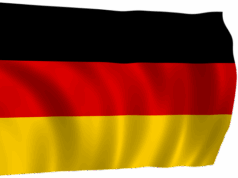
Denmark could pursue one of the world’s most ambitious climate goals in the coming years. The country’s greenhouse gas emissions are expected to be cut by 70 percent by 2030 compared to 1990 levels.
The Danish Social Democrats of the prospective future Prime Minister Mette Frederiksen agreed this evening with the Socialist People’s Party (SF) and the Unity List. The condition for this, however, is that there is a basic agreement on a new government.
Such an agreement is not yet in sight – especially since another left-wing party, the social liberal Radikale Venstre (RV), the evening negotiations in Copenhagen this time surprisingly stayed away. Its chairman Morten Ostergaard criticized that interim results of the talks had been published contrary to the agreements.
Climate was the main campaign theme
The climate was the most important campaign topic in Denmark before the general election on 5 June. The Social Democrats were the strongest force in the election. Frederiksen has since negotiated with the other parties about possible cooperation.
She had announced in the election campaign to seek a minority government that wants to work on most issues with the left bloc of left-wing parties SF, RV and Unity List. In the migration, however, she wants to rely on the support of the rival conservative-liberal camp.



